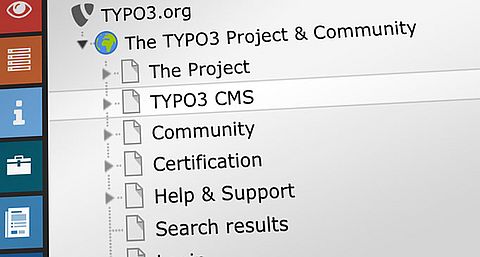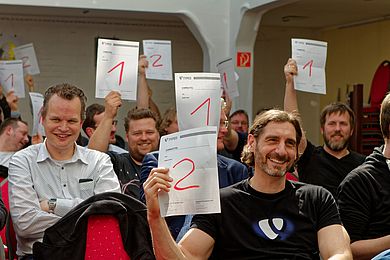Chiba/Tokyo - 19 March 2010
We are deeply saddened for the thousands of lives lost by the disaster in Japan. To all survivors and people still not in safety, please accept our sincere sympathy. The Japanese TYPO3 community conducted not long ago the TYPO3 Community Day in Tokyo on 18 February 2011 with a following T3SKI11 weekend in Hakuba, Nagano. Beside an increased crowd of Japanese participants, we could also welcome more international visitors from Canada, Germany, Switzerland (and via Skype). It was a great exchange of information, culture and friendship. But only 1 month later, we all are shocked by this unprecedented disaster. We hear from our friends and fellow community members abroad words of great sympathy and encouragement. As we all are located at various places within Japan, the earthquake had a different impact on our life and family. We have collected 4 short statements of TYPO3 users in Japan: ?????????????????????????????????????????????????????????? ????????????????????????????????????????????????????????????????????????????????????????????????? ?????????????????????? ?????????????????????????????????????? ??????????????????????? ??TYPO3?????????????????????????????Pray for Japan. -- Fumiki Kanno <link http: twitter.com styletune>@styletune, TokyoThe first days were full of worries to stay safe, assure the contact to family and friends but also collect the right information to somehow judge what is exactly going on. It was full of fears. On Monday, I went back to the office and was relieved to see it is safe. Yet the situation outside the office was different, lots of soil liquefaction and cracks I discovered. But it could have been much worse thinking of Northern Japan. For the rest of the week, I decided to operate remotely and take the precautionary measure to shut down all devices, also to conserve (if only a little) energy. I decided not to leave the country. I have great respect and trust in the Japanese people! They always stayed calm, did not panic, were supportive and helpful... even in such absolute uncertainty. Ganbaro Nihon! Together we will overcome this. -- Thomas Schläpfer <link http: twitter.com snowflakejapan>@snowflakeJapan, Chiba/Tokyo
??????????
????????????????????????????????????????????????????????????????????????
?????????????????????????????????????????????
???????????????????????????????????????????????
??????????????????????????????????????????? -- Hidefumi Okumura <link http: twitter.com hk_okumura>@hk_okumura, Kyoto
The history's worst earthquake and tsunami left deep scars to the eastern coastline of Japan. Many towns and villages have disappeared, a huge number of human lives were lost, and there are yet a lot of people waiting for rescue. I was in Kyoto, which is located 700 kilometers away from the epicenter, but still felt the quake. The disaster may affect Japanese people and economy badly. However, we have got words of concern and encouragement from many people from various countries. We shall rise above the difficult situation supported by the warmth of your voice. -- Ichitaro Tsuji <link http: twitter.com ichitarot>@ichitarot, Kyoto
And what words can only hardly describe, pictures will tell (credits: theatlantic.com).
Earthquake in Japan: <link http: www.theatlantic.com infocus earthquake-in-japan>www.theatlantic.com/infocus/2011/03/earthquake-in-japan/100022/ The Aftermath: www.theatlantic.com/infocus/2011/03/japans-earthquake---the-aftermath/100023/ Rescue, Recovery and Reaction: www.theatlantic.com/infocus/2011/03/japan-earthquake-rescue-recovery-and-reaction/100024/ The Struggle to Recover: <link http: www.theatlantic.com infocus japan-earthquake-the-struggle-to-recover>www.theatlantic.com/infocus/2011/03/japan-earthquake-the-struggle-to-recover/100026/ Facebook pictures by Thomas Schläpfer: on.fb.me/e1TrDE Reference site of Wikipedia is <link http: www.cbsnews.com stories main20043126.shtml>www.cbsnews.com/stories/2011/03/14/501364/main20043126.shtml
We are happy and thankful for the contacts and support received by the international TYPO3 community. Our help and support goes to fellow citizens less lucky than us, still having no water, no food, no shelter. If you wish to help, please support a charity organization and make a monetary donation.
Two ways to help (beside many others) Donation to the Japanese Red Cross: <link http: www.google.com crisisresponse japanquake2011.html>www.google.com/crisisresponse/japanquake2011.html A privately organized donation dedicated directly to local charities or surviving victims: <link http: blog.snowflake.asia en article one-way-to-help-japan>blog.snowflake.asia/en/article/2011/03/16/one-way-to-help-japan/




